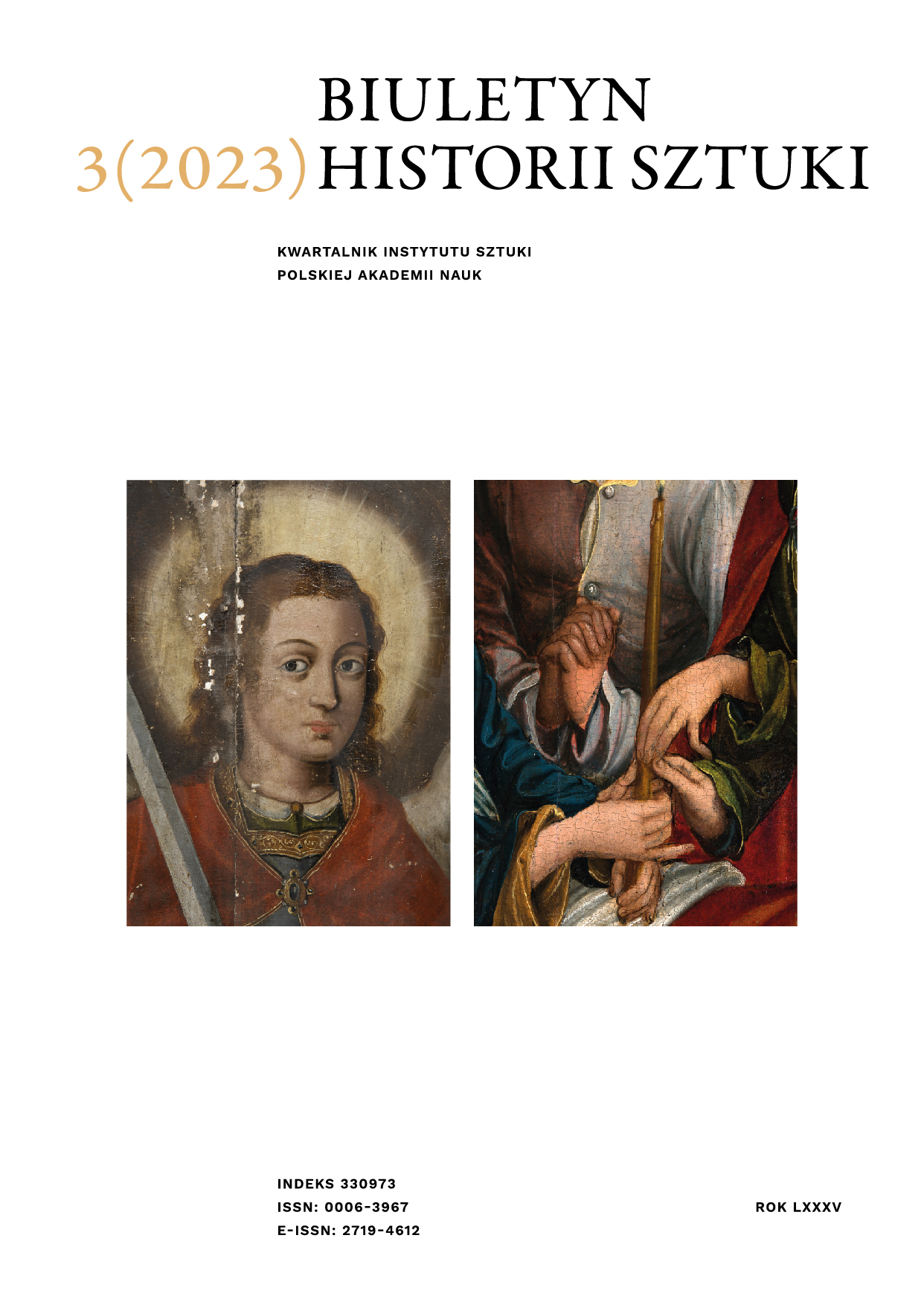Toruński obraz Madonny z Dzieciątkiem
z kościoła św. Jakuba w świetle najnowszych badań. Przyczynek do studiów nad lokalną działalnością artystyczną w Toruniu około roku 1400
The “Virgin and Child”from the Church of St. Jacob in Toruń in the Light of Recent Research. A Contribution to the Study of the Local Artistic Activity in Toruń ca. 1400
Author(s): Juliusz Raczkowski, Monika Jakubek-RaczkowskaSubject(s): Visual Arts, History of Art
Published by: Instytut Sztuki Polskiej Akademii Nauk
Keywords: Teutonic State in Prussia; Toruń; Gothic style; panel painting; Prague; painting in Bohemia; Bohemian Beautiful Style; 15th-century painting; painting in Toruń ca. 1400;
Summary/Abstract: Against the background of the surviving paintings dating from the period under the rule of the Teutonic Order, the Virgin and Child from the church of St James in Toruń (now the Diocesan Museum in Toruń, inv. no. MDT-M-007) must be seen as a unique example of a Gothic panel painting, referring to the Bohemian Beautiful Style circa 1400. In specialist literature, it is dated to between 1430 and 1440 and is considered to be a compilatory work by a master settled in Prussia, who combined elements of Bohemian painting with artistic influences derived from the Netherlands (e.g. Rogier van der Weyden) or from Cologne. On the basis of recent comparative research supported by analyses based on non-invasive methods (NIR, UV, XRF, dendrochronology based on macrophotography of annual growth rings), the painting must be recognised as produced in Toruń about 1410 (the felling of the tree dated to 1404, preparation of the support: at least +2 years). It bears clear features of Bohemian painting in its composition, style, technique of execution and overall impact, but it also shows a sig- nificant individual trait (in the details of iconography and costume, the depiction of figures, and technological details). It constitutes a document of the artistic activity in Toruń ca. 1400 and the religious needs of the local circles; it is also an important element in the history of the reception of the imagines de Praga in Central Europe.
Journal: Biuletyn Historii Sztuki
- Issue Year: 85/2023
- Issue No: 3
- Page Range: 5-46
- Page Count: 42
- Language: Polish

